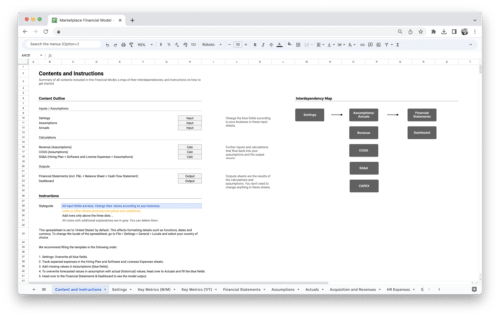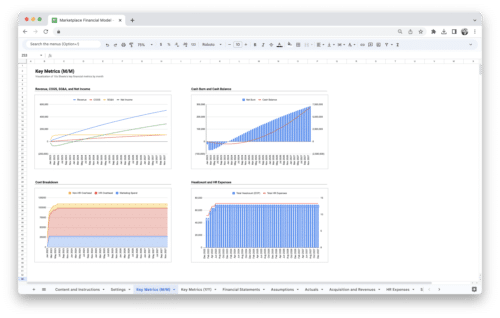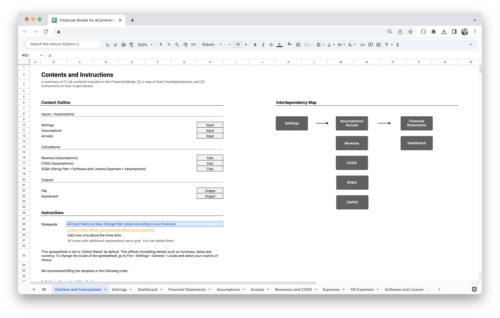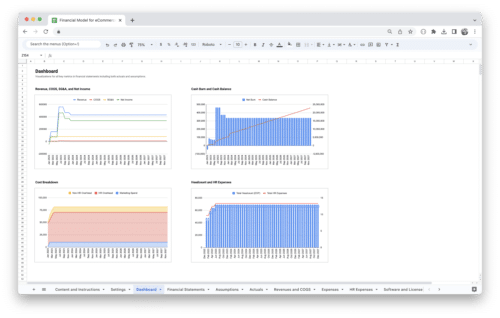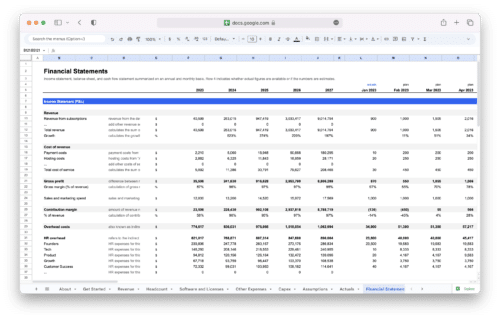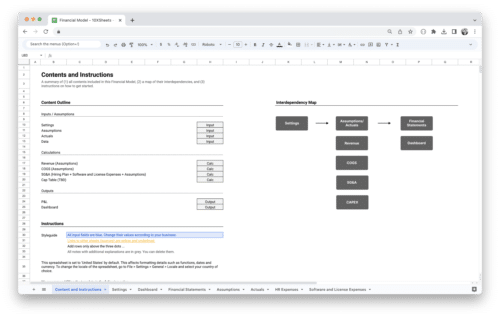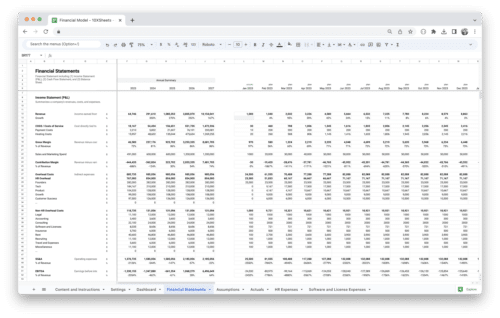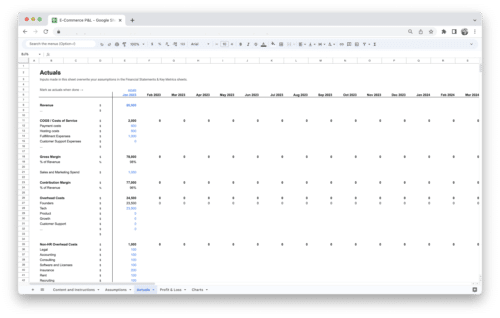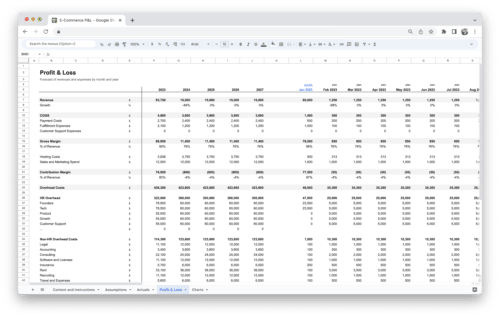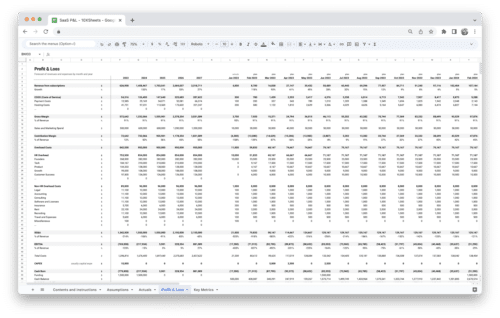
Ever wondered how investment funds manage to get the money they need when opportunities arise? The answer lies in capital calls, a crucial process for accessing the committed capital from investors at strategic times.
This guide will break down everything you need to know about capital calls, from what they are and how they work to the best practices for managing them effectively. Whether you’re a fund manager needing to navigate the complexities of capital requests or an investor seeking to understand your financial commitments, this guide will provide clear, practical insights to help you manage and optimize the capital call process.
What is a Capital Call?
A capital call, also known as a drawdown, is a financial request made by a fund manager to investors to provide a portion of the capital they have committed to the fund. This process is fundamental to private equity, venture capital, and other investment vehicles where funds are raised in advance but are drawn down over time as investment opportunities arise or operational needs emerge.
When investors commit capital to a fund, they agree to provide a certain amount of money over the life of the fund. However, this capital is not provided upfront. Instead, the fund manager will issue capital calls as needed, usually in phases, to fund specific investments or expenses. Each capital call specifies the amount required, the purpose of the drawdown, and the deadline for investors to contribute their share.
The capital call process involves several key elements:
- Commitment Agreement: Investors enter into an agreement with the fund manager, detailing their total commitment and the conditions under which capital calls will be made.
- Call Notice: The fund manager sends a capital call notice to investors. This notice includes details such as the amount being called, the intended use of the funds, and the deadline for payment.
- Funding and Contribution: Investors are required to transfer the specified amount of capital to the fund by the deadline. Failure to meet this deadline may result in penalties or other consequences as stipulated in the fund’s agreement.
- Accounting and Tracking: The contributions from investors are tracked and recorded. This ensures that the fund manager can accurately manage the fund’s financials and investments.
Capital calls are a crucial mechanism for managing liquidity in a fund, allowing fund managers to deploy capital as needed while avoiding holding large sums of cash that might otherwise be idle. This approach helps in aligning the timing of investments with the availability of capital, optimizing fund performance and investment returns.
Importance of Understanding Capital Calls
Understanding capital calls is essential for both fund managers and investors due to several important reasons:
- Effective Financial Planning: Knowing how capital calls work helps in planning financial commitments and managing cash flow efficiently. For fund managers, this means being able to time investments appropriately and ensure operational expenses are covered. For investors, it means being prepared to meet capital requirements without disrupting their own financial plans.
- Investor Relations: Clear understanding and communication regarding capital calls help in maintaining good relationships with investors. It ensures transparency, fosters trust, and helps in managing investor expectations effectively.
- Regulatory Compliance: Understanding the regulatory framework surrounding capital calls ensures that all legal and contractual obligations are met. This reduces the risk of compliance issues and potential legal disputes.
- Operational Efficiency: Effective management of capital calls contributes to the overall operational efficiency of the fund. By planning and executing capital calls effectively, fund managers can avoid delays and optimize the use of capital.
- Financial Performance: The timing and execution of capital calls impact the fund’s financial performance. Proper management ensures that investments are made at the right time, which can enhance returns and reduce the risk of underperformance.
By grasping these aspects of capital calls, you can better navigate the complexities of fund management and investment, ensuring that both you and the fund are positioned for success.
The Capital Call Process
Understanding the capital call process is essential for effective fund management. This process involves several key stages, each requiring careful attention to detail to ensure smooth operations and strong investor relations.
Initiation of Capital Calls
The initiation of a capital call is the first step in accessing the committed capital from investors. Here’s how it typically unfolds:
- Assessing Financial Needs: The fund manager determines when additional capital is needed based on upcoming investments or operational requirements. This could involve evaluating current portfolio performance, future funding needs, or changes in investment strategy.
- Drafting the Call Notice: The next step is to draft a capital call notice. This document includes:
- Amount Required: The exact amount of capital needed from each investor.
- Purpose: A clear explanation of why the funds are required, such as a new investment opportunity or operational expenses.
- Due Date: The deadline by which the capital must be contributed.
- Reviewing and Approving: Before sending out the notice, it is often reviewed and approved by legal or compliance teams to ensure it meets all contractual and regulatory requirements.
Communication with Investors
Effective communication is critical to ensure that investors understand the capital call and respond promptly. Here’s how to manage this aspect effectively:
- Clear and Transparent Notices: Ensure that capital call notices are detailed and easy to understand. Clearly state the amount required, the deadline, and the specific use of the funds. Providing a rationale helps investors see the value of the capital call.
- Regular Updates: Keep investors informed with regular updates on fund performance and upcoming capital needs. This helps in building trust and ensuring that investors are prepared for future calls.
- Responsive Support: Designate a contact person or team to handle queries related to the capital call. Promptly address any concerns or questions from investors to maintain good relations and ensure smooth processing.
Timeline and Deadlines
Timelines and deadlines play a crucial role in the capital call process. Here’s how to manage them:
- Standard Timeframes: Typically, investors are given between 10 to 15 business days to respond to a capital call. This timeframe allows investors to arrange their funds and meet the deadline without undue stress.
- Tracking Responses: Use a tracking system to monitor responses and ensure that all investors meet the deadline. This helps in managing cash flow and planning investments accordingly.
- Enforcement of Deadlines: If an investor fails to respond on time, follow up with reminders and assess the need for any penalties as outlined in the fund’s agreement. This ensures that the capital call is enforced effectively.
Handling Delays and Defaults
Delays and defaults can disrupt the fund’s operations. Here’s how to handle these issues:
- Grace Periods: Offer a grace period as specified in the fund’s partnership agreement. This allows investors some additional time to fulfill their commitments before any penalties are applied.
- Penalties for Non-Compliance: Implement penalties for late payments or defaults, such as additional fees or interest charges. This discourages delays and compensates for any inconvenience caused.
- Legal Remedies: In cases of persistent default, consider legal action as a last resort. This could involve pursuing claims for breach of contract or other legal remedies to recover the outstanding amounts.
Examples of Capital Calls
Understanding capital calls through real-world examples can provide valuable insights into their practical applications and implications. Let’s explore a few scenarios that illustrate how capital calls work in different investment contexts.
Example 1: Private Equity Fund
Imagine a private equity fund that has raised $100 million from various investors. The fund operates under a commitment agreement where investors agree to provide capital as needed over a 10-year period. The fund manager has identified a promising investment opportunity in a tech startup and determines that $10 million is needed to proceed.
The manager issues a capital call notice to the investors, requesting them to contribute a portion of their committed capital to cover the $10 million requirement. The notice specifies that each investor’s share of the $10 million is proportional to their initial commitment. If an investor committed $5 million to the fund, they will be required to contribute $500,000 (10% of $5 million) in response to this capital call.
Example 2: Real Estate Investment Fund
Consider a real estate investment fund that is focused on acquiring and developing commercial properties. The fund initially raised $50 million in capital commitments from investors. The fund manager identifies an opportunity to purchase a prime piece of real estate for $15 million.
To proceed with the acquisition, the manager issues a capital call for $15 million. The capital call notice explains the purpose of the funds, which is to secure the property and cover related acquisition costs. Investors are asked to provide their proportional share of the $15 million based on their committed amount. For instance, an investor who committed $10 million to the fund would be required to contribute $3 million (20% of $15 million) to meet this capital call.
Example 3: Venture Capital Fund
A venture capital fund has raised $200 million in total commitments from several investors, with a focus on investing in early-stage startups. The fund manager identifies a high-potential startup that requires $5 million in funding to expand its operations.
The manager issues a capital call for $5 million, specifying that the funds will be used to support the startup’s growth and development. The capital call notice includes details on the startup’s business model and projected returns. Investors are asked to contribute their respective shares based on their initial commitments. If an investor committed $20 million, their share of the $5 million capital call would be $500,000 (2.5% of $20 million).
Example 4: Infrastructure Fund
An infrastructure fund has raised $300 million to invest in large-scale infrastructure projects. After assessing various opportunities, the fund manager decides to invest in a renewable energy project requiring $25 million.
A capital call notice is issued to the investors for this amount. The notice provides details about the project, including its environmental impact and financial projections. Investors are required to contribute their proportional share of the $25 million. For example, an investor with a $30 million commitment to the fund would be called upon to provide $2.5 million (8.33% of $30 million).
Example 5: Fund Operational Expenses
Suppose a fund has $50 million in commitments and needs to cover operational expenses, including management fees and administrative costs. The fund manager determines that $1 million is required to cover these expenses for the upcoming quarter.
A capital call is issued to cover the operational shortfall. The notice details the purpose of the capital call, emphasizing that the funds will be used to ensure smooth fund operations rather than making new investments. Investors contribute based on their commitment proportions. If an investor committed $5 million, they would need to contribute $100,000 (2% of $1 million).
Each of these examples illustrates how capital calls are utilized in different investment contexts to meet specific funding needs, whether for new investments, operational expenses, or strategic opportunities. By understanding these scenarios, you can gain a clearer perspective on how capital calls function and their impact on both fund management and investor contributions.
Capital Call Legal and Regulatory Framework
Navigating the legal and regulatory landscape is crucial for managing capital calls. Adhering to relevant laws and regulations helps protect the fund and its investors and ensures smooth operations.
Relevant Laws and Regulations
Capital calls are governed by various laws and regulations that vary depending on the jurisdiction. Key considerations include:
- Securities Laws: These laws govern the issuance and management of securities, including capital calls. Fund managers must comply with regulations related to securities offerings, disclosures, and investor protections.
- Fund-Specific Regulations: Different types of funds, such as private equity or venture capital funds, may have specific regulations that affect capital calls. These regulations often include requirements for reporting, compliance, and investor communication.
- Jurisdictional Differences: Regulations can vary by region or country. It’s important to be aware of the specific legal requirements in the jurisdictions where the fund operates.
Contractual Obligations
The partnership agreement or fund documents outline the contractual obligations related to capital calls. Here’s what to consider:
- Call Terms: The agreement specifies the terms and conditions under which capital calls can be made. This includes the schedule for calls, the process for notifying investors, and any limits on the frequency or amount of calls.
- Investor Rights and Responsibilities: The agreement details the rights and responsibilities of both the fund manager and the investors regarding capital commitments. This includes obligations to contribute funds when called and the process for handling defaults.
- Dispute Resolution Mechanisms: The agreement should include provisions for resolving disputes related to capital calls. This may involve arbitration, mediation, or legal proceedings, depending on the nature of the dispute.
Compliance Requirements
Maintaining compliance with legal and regulatory requirements is essential for smooth capital call management. Key aspects include:
- Record-Keeping: Keep comprehensive records of all capital calls, including notices, responses, and financial transactions. This helps in tracking compliance and provides documentation for audits or legal reviews.
- Regulatory Reporting: Ensure that all required regulatory reports and disclosures are completed accurately and submitted on time. This includes reports to securities regulators and other relevant authorities.
- Regular Audits: Conduct regular audits to review compliance with legal and contractual requirements. This helps identify and address any issues before they become significant problems.
Understanding and managing these aspects effectively will help you navigate the complexities of capital calls and maintain a well-functioning fund.
Capital Call Financial Implications
Capital calls have several financial implications that can affect the overall performance and management of a fund. Understanding these implications helps in making informed decisions and maintaining financial stability throughout the investment period.
Impact on Fund Performance
Capital calls directly impact the performance of a fund in various ways:
- Investment Opportunities: Timely capital calls enable the fund to capitalize on investment opportunities. By accessing capital when needed, the fund can make investments that align with its strategy and potentially increase returns. For instance, if a private equity fund needs to act quickly on a promising acquisition, having readily available capital ensures that it can proceed without delay, thereby enhancing the likelihood of a successful deal.
- Operational Efficiency: Adequate capital allows for smooth operational management. If a fund has sufficient liquidity, it can cover operational expenses, such as management fees and administrative costs, without disruption. This operational efficiency supports the fund’s ability to execute its strategy effectively and maintain investor confidence.
- Portfolio Performance: The ability to draw on committed capital impacts portfolio performance. Funds that can efficiently manage capital calls are better positioned to optimize their investment portfolios. For example, venture capital funds that have timely access to capital can support their portfolio companies through critical growth stages, potentially increasing the value of their investments.
- Investor Returns: Delays or inefficiencies in capital calls can affect investor returns. If a fund cannot access capital as planned, it may miss out on high-return opportunities or face financial strain, which could lead to lower returns for investors. Conversely, well-managed capital calls can enhance returns by ensuring that investments are made at the optimal time.
Cash Flow Management
Effective cash flow management is essential to handle capital calls and ensure that the fund operates smoothly:
- Forecasting and Planning: Accurate forecasting of capital needs helps in planning cash flow. Fund managers should predict when capital will be required based on the fund’s investment schedule and operational expenses. This involves analyzing upcoming investments, anticipated expenses, and the timing of capital calls.
- Liquidity Management: Maintaining adequate liquidity is crucial. Fund managers need to ensure that there are sufficient cash reserves to cover capital calls when they occur. This might involve setting aside a portion of capital for unexpected needs or having a contingency plan in place.
- Investor Communication: Effective communication with investors regarding cash flow needs is important. Providing clear and timely information about capital calls and their purposes helps investors prepare and manage their own cash flow accordingly.
- Handling Shortfalls: Develop strategies to handle potential shortfalls in capital. If investors are unable to meet a capital call, the fund may need to explore alternative financing options or adjust its investment plans. Having a clear plan for managing such situations helps minimize disruptions.
- Cash Flow Analysis: Regularly analyze cash flow to monitor the impact of capital calls on the fund’s financial health. This includes tracking the timing of cash inflows and outflows, assessing the adequacy of reserves, and making adjustments as needed to maintain financial stability.
Valuation Adjustments
Capital calls can impact the valuation of the fund and its investments:
- Asset Valuation: The value of the fund’s assets may need to be reassessed based on the latest capital calls. For example, if a capital call is used to make a new investment, the value of the portfolio might increase, but it’s important to accurately reflect this change in valuations.
- Net Asset Value (NAV): Capital calls influence the calculation of Net Asset Value (NAV). NAV is the total value of the fund’s assets minus its liabilities. When capital is called and invested, it impacts the NAV calculation, which can affect reporting and investor perceptions.
- Investment Performance: As capital is deployed into new investments or used to support existing ones, the performance of these investments will influence overall fund valuation. Regularly updating valuations based on the latest capital calls and investment outcomes provides a more accurate picture of the fund’s performance.
- Investor Equity: Capital calls affect the equity stakes of investors in the fund. When capital is called, investors’ equity in the fund is adjusted based on their contributions. Ensuring accurate tracking and reporting of these adjustments is important for maintaining transparency and trust.
Best Practices for Managing Capital Calls
Managing capital calls effectively involves a range of best practices to ensure smooth operations and positive investor relations. Here’s a comprehensive list of best practices to consider:
- Develop a Clear Capital Call Schedule: Establish a well-defined schedule for capital calls, including timelines and amounts, to provide transparency and allow investors to plan accordingly.
- Implement Effective Communication Strategies: Maintain open and clear communication with investors about capital call requirements, purposes, and deadlines.
- Utilize Forecasting and Planning Tools: Employ forecasting tools to predict capital needs accurately and plan cash flow management effectively.
- Maintain Adequate Liquidity Reserves: Ensure the fund has sufficient liquidity reserves to handle unexpected capital calls or delays in contributions.
- Automate and Streamline Processes: Use technology to automate the capital call process, including notices and tracking, to improve efficiency and accuracy.
- Monitor and Manage Cash Flow: Regularly review cash flow to assess the impact of capital calls and adjust plans as needed to maintain financial stability.
- Address Delays and Defaults Promptly: Develop procedures for handling delays and defaults, including grace periods, penalties, and legal remedies if necessary.
- Ensure Regulatory Compliance: Adhere to all relevant laws and regulations related to capital calls, including reporting and documentation requirements.
- Conduct Regular Audits and Reviews: Perform regular audits and reviews of capital call processes and financial records to ensure accuracy and compliance.
- Engage with Investors Proactively: Build strong relationships with investors through proactive engagement, addressing their concerns, and providing updates on fund performance and capital needs.
Capital Call Management Tools
The landscape of capital call management has evolved significantly with advancements in technology. Leveraging the right tools and innovations can greatly enhance efficiency, accuracy, and overall fund management. Here’s a closer look at some of the most effective technological solutions and practices in this area.
Software Solutions for Capital Call Management
Modern software solutions are designed to streamline the capital call process, making it easier to manage and track capital requirements. Here’s how these tools can benefit fund managers and investors:
- Capital Call Management Platforms: Specialized software platforms are available that cater specifically to capital call management. These platforms provide a centralized location for managing capital calls, tracking investor responses, and handling financial transactions. Features often include:
- Integrated Communication Tools: These tools facilitate sending capital call notices, reminders, and updates directly through the platform, ensuring timely and accurate communication.
- Real-Time Tracking: Track the status of each capital call in real-time, including responses from investors and outstanding amounts. This helps in managing cash flow and investment planning more effectively.
- Reporting and Analytics: Generate detailed reports and analytics on capital calls, investor contributions, and fund performance. These insights can be used to make informed decisions and optimize fund management.
- Investor Portals: Many funds use dedicated investor portals to provide transparency and easy access to information. These portals offer features such as:
- Access to Capital Call Notices: Investors can view and respond to capital call notices through the portal, streamlining the process and improving response times.
- Investment Tracking: Investors can track their capital contributions, view their share of the fund’s performance, and access historical data.
- Communication Channels: Secure messaging and notification systems enable effective communication between fund managers and investors.
- Accounting and Financial Systems: Integrating capital call management with accounting systems can simplify financial record-keeping and reporting. These systems often include:
- Automated Transactions: Automate the recording of capital contributions and related transactions, reducing manual errors and saving time.
- Financial Reconciliation: Reconcile capital call transactions with bank statements and other financial records to ensure accuracy.
Spreadsheet Templates
While advanced software solutions are highly effective, spreadsheet templates remain a popular tool for managing capital calls, especially for smaller funds or those in the early stages. Here’s how spreadsheets can be utilized:
- Customizable Templates: Spreadsheets offer flexibility with customizable templates that can be tailored to fit the specific needs of a fund. You can create templates to track capital commitments, call schedules, and investor responses.
- Manual Tracking and Reporting: Use spreadsheets for manual tracking of capital call details, including amounts requested, amounts received, and deadlines. Basic reporting functions can be set up to summarize capital call activities and monitor compliance.
- Integration with Financial Models: Spreadsheets can be integrated with financial models to project future capital needs and analyze the impact of capital calls on fund performance. This allows for scenario analysis and forecasting.
- Data Management: Store and manage investor contact information, contribution history, and other relevant data in a structured format. Ensure that data is kept up-to-date and secure.
Automation and Efficiency
Automation is transforming the capital call management process, leading to increased efficiency and reduced administrative burden. Here’s how automation can enhance capital call management:
- Automated Capital Call Notices: Automation tools can generate and send capital call notices based on predefined schedules and criteria. This reduces the time spent on manual preparation and ensures timely distribution.
- Electronic Funds Transfer: Automate the process of collecting capital contributions through electronic funds transfer (EFT). This speeds up the collection process and minimizes the risk of errors associated with manual transactions.
- Data Integration and Synchronization: Integrate capital call management systems with other financial and operational systems to ensure seamless data synchronization. This eliminates the need for manual data entry and reduces the risk of discrepancies.
- Alerts and Reminders: Set up automated alerts and reminders for upcoming deadlines, outstanding contributions, and other important tasks. This helps keep investors and fund managers on track and ensures that deadlines are met.
- Workflow Automation: Implement workflow automation to streamline approval processes, documentation management, and compliance checks. This can improve the efficiency of capital call management and reduce administrative overhead.
- Advanced Analytics and Reporting: Use automated analytics tools to generate reports and insights on capital call performance. These tools can provide real-time data and trend analysis, helping fund managers make data-driven decisions.
By adopting these technological tools and innovations, you can significantly enhance the efficiency and effectiveness of capital call management. Whether through specialized software platforms, customizable spreadsheets, or automation, leveraging the right technologies will help streamline processes, improve accuracy, and ultimately support better fund management.
Conclusion
Understanding capital calls is vital for both fund managers and investors to ensure smooth financial operations and effective investment management. By grasping the intricacies of how capital calls are initiated, communicated, and managed, you can better navigate the challenges and opportunities that arise in the investment landscape. From recognizing the impact on fund performance to leveraging technology for efficient management, this guide has covered the essential aspects you need to know. Being well-informed about the capital call process helps in making strategic decisions, maintaining investor trust, and achieving better financial outcomes.
As you apply the knowledge from this guide, remember that effective communication, timely capital calls, and adherence to best practices can significantly enhance both fund management and investor relationships. Embracing technological tools and understanding the financial implications of capital calls will enable you to manage capital more efficiently and optimize your investment strategies. Whether you’re overseeing a fund or contributing as an investor, having a solid grasp of capital calls will lead to more informed decisions and smoother financial operations.
Get Started With a Prebuilt Template!
Looking to streamline your business financial modeling process with a prebuilt customizable template? Say goodbye to the hassle of building a financial model from scratch and get started right away with one of our premium templates.
- Save time with no need to create a financial model from scratch.
- Reduce errors with prebuilt formulas and calculations.
- Customize to your needs by adding/deleting sections and adjusting formulas.
- Automatically calculate key metrics for valuable insights.
- Make informed decisions about your strategy and goals with a clear picture of your business performance and financial health.

